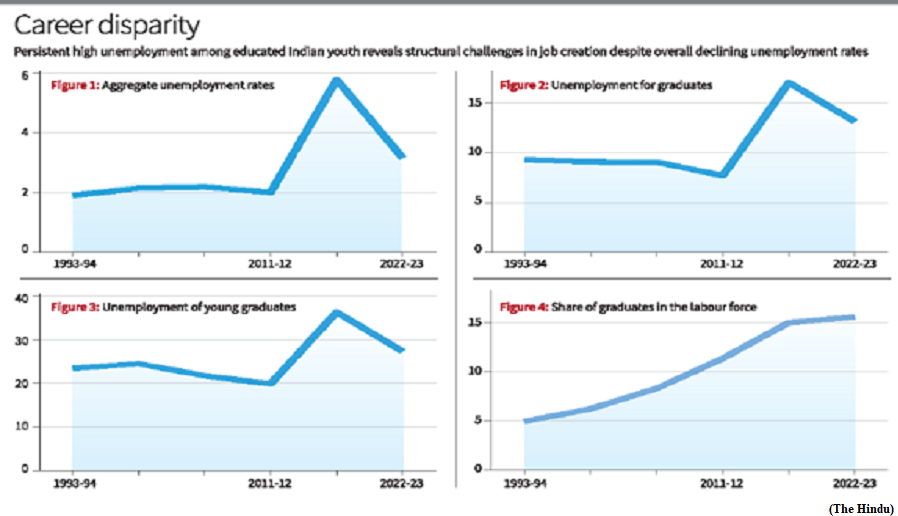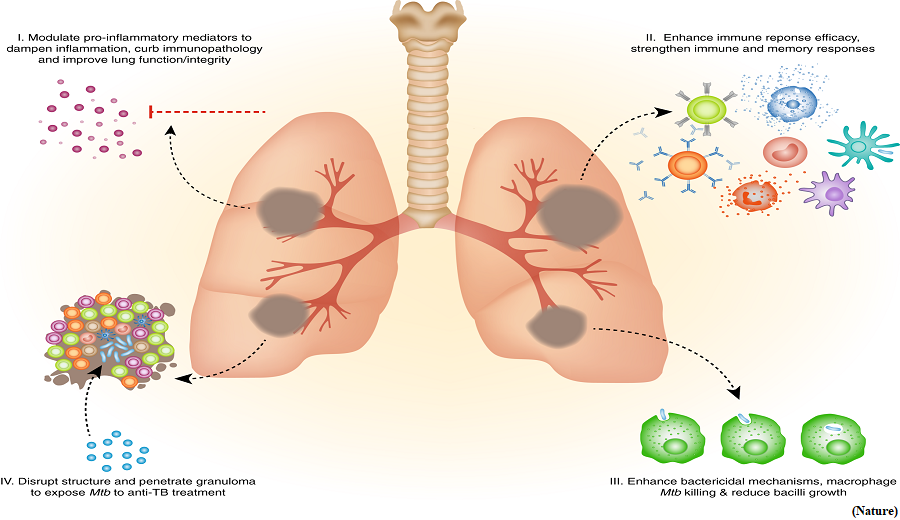What does China’s 2024 economic policy look like? (GS Paper 3, Economy)

Why in news?
- The 2023 Chinese Central Economic Work Conference (CEWC) recently concluded, highlighting a stability-focused pathway for the nation’s 2024 economy.
- Key directives include shifting from export-led to domestic demand-led growth, enhancing high-quality production, striving for tech self-reliance while cooperating with trade partners, and maintaining financial discipline.
- While echoing previous goals, this agenda emphasises the need for structural reforms, necessitating a departure from entrenched Chinese party-state practices to shape the country’s economic future.
How is China strategically addressing the challenges?
- The first key area is dual circulation. As global demand has continued to decline amidst heightened sentiments of protectionism and ‘de-risking’, the country is now looking inwards to boost domestic consumption and only allow for a complimentary relationship with international demand.
- Chinese President has referred to this as the “New Pattern of Development,” and is an ambitious structural reform for a country known as the world’s manufacturing hub.
What specific measures are being implemented?
- China prioritises “high-quality” economic growth focused on addressing the imbalance between development and people’s increasing demands for a better life.
- This shift emphasises domestic demand, specialised self-reliance, and sectors like high-tech and sustainable manufacturing.
- Agriculture receives attention for its contribution to GDP and growth, aligning with goals of rural revitalisation and food security, supported by the establishment of “agriculture innovation centers.”
- Self-reliance in core technologies has continued to be a repeated and explicit goal for the revival of the Chinese economy in the backdrop of intensifying tech-related export controls placed by the U.S. and its issue-based and treaty-based allies (such as the Netherlands and Japan respectively) against China.
Proactive fiscal policy:
- Although, the language of the CEWC readout has changed from “self-improvement” in high-technology in 2022 to “strength” in 2023. China maintains a “prudent monetary policy” and a “proactive fiscal policy,” focusing on financial stability.
- Under ‘proactive fiscal policy’, in 2022, China has mobilised tools such as tax rebates for medium and small enterprises, as well as interest rate discounts for local governments. This is to enable them to alleviate some of the debt stress and continue to invest either in keeping employees on a regular payroll or in the unhindered development of infrastructure.
- Fiscal tools like tax rebates and interest rate discounts aid small enterprises and local governments in managing debt and sustaining infrastructure development. Efforts to ease local government debt include a special bond issuance for post-disaster recovery.
- However, the local authorities are warned to embrace frugality and stricter financial discipline due to escalating debt burdens, reaching around $60 trillion.
- The emphasis is on “fiscal sustainability” rather than bailouts. Monetary policy aims for stabilised liquidity levels, avoiding infusion despite past promises of an economic boost.
- Economic challenges like currency depreciation, income insecurity, rising unemployment, and capital outflows suggest injecting more liquidity won’t improve investment and borrowing sentiments.
Opening-up approach:
- To address economic concerns, China aims to promote balanced trade to increase international demand. This move signals a willingness to open its market to key trade partners, potentially creating more balanced trade relations without favoring China excessively.
- This approach aligns with China’s goal of “opening-up,” supporting high-quality growth, focusing on self-reliance, especially in areas like technology and food security, amid ongoing U.S.-China geopolitical competition.
Are graduates facing unemployment?
(GS Paper 3, Economy)
Context:
- In 1932, the famous engineer and statesman M Visvesvaraya pointed to the high prevalence of unemployment amongst the educated, pointing out that “the educated men of this country are suffering most from lack of employment.”
- Ninety years later, the actions of those involved in the Parliament breach have brought the question of youth unemployment to the fore once more.

Rising youth unemployment:
- While Rahul Gandhi holds the present government responsible for rising youth unemployment, official data seems to indicate the opposite.
- The unemployment rate, which hit a high of 6.1% in 2017-18, has reduced to 3.2% in 2022-23, according to the latest data from the Periodic Labour Force Survey (PLFS).
- Even though unemployment rates are low and have been falling since 2017-18, there exist significant disparities in the experience of unemployment.
- The highest rates of unemployment are faced by those who should face bright prospects in a growing economy: young highly educated workers. This is not a problem that has arisen recently but seems to be a structural feature of the Indian economy.
- The economy faces problems in generating employment for young graduates, with the situation exacerbating in recent years.
Analysis of employment data from the 50th Round of the NSSO:
- This analysis looks at employment data from the 50th Round of the NSSO surveys – covering the period 1993-94 – to the PLFS surveys of 2022-23.
- Workers are classified according to the UPSS, which classifies individuals as employed or unemployed based on their labour force activity over the previous year.
- This analysis only focuses on individuals aged 18 to 65.
Education and unemployment:
- Figure 1 outlines the unemployment rates for the aggregate labour force of individuals aged 18 to 65. Unemployment rates had always been low since the early 1990s, jumping to a historical high of 5.77% in 2017-18.
- By 2022-23, the unemployment rate showed signs of reducing, falling to 3.15% for this cohort. While unemployment rates are currently higher than in previous decades, it has shown a reduction compared to 2017-18.
- Individuals with higher education have always faced higher unemployment rates than the rest of the population, a situation that has characterised the Indian economy since the 1990s.
Figure 2 outlines the unemployment rates for those with graduate degrees.
- From roughly 9% in the 1990s, the rate fell to 7.66% in 2011-12, before rising to 17% in 2017-18 and then 13% in 2022-23.
Figure 3 shows the unemployment rate for young workers aged 18 to 29 with a graduate degree.
- From 1993-94 to 2004-05, almost a fifth to a quarter of all young individuals with graduate degrees faced long unemployment spells of 6 months or more.
- The rate dropped to 20% in 2011-12, before rising to a staggering 36% in 2017-18. The rate has been reduced by 2022-23 with 27% of young graduates facing long spells of unemployment.
- Earlier, these high rates of unemployment were concentrated amongst a relatively small section of the labour force.
- In 1993-94, only 5% of the labour force were graduates, as shown in Figure 4. However, with the expansion of higher education, the share of graduates in the labour force has risen to around 15% by 2022-23.
- Thus, overall unemployment rates remain low even though graduates face high unemployment because the share of educated workers in the labour force is low.
- As enrolment rates continue to rise, the share of graduates in the labour force will increase, leading to increases in the aggregate unemployment rate. The problems of young job-seekers are not an aberration, but a worrying feature of the Indian labour market.
Conclusion:
- The problem of youth unemployment is a serious issue. Much more work is required to outline the exact factors causing unemployment amongst the highly educated be it the inability of the education system to impart the requisite skills, or the inability of the growing economy to generate enough jobs for the increasing numbers of educated job-seekers entering the labour force each year to ensure that the aspirations of the youth are not thwarted and the potential of the demographic dividend is properly harnessed.
Do shortened TB treatment plans offer the solution for India’s TB burden?
(GS Paper 2, Health)
Context:
- Tuberculosis is a dreadful disease with a high mortality and has consistently been a global health concern.
- India accounts for around 27% of TB cases worldwide in part to its population of 1.3 billion.

TB elimination:
- In the last decade, the National Tuberculosis Elimination Programme (NTEP), along with the private sector, has successfully found and treated 17.14 million people with TB, including an estimated 1.4 million children.
- However, the COVID-19 pandemic adversely affected TB care and has threatened to reverse the gains made in reducing India’s burden.
Challenges:
- For drug-sensitive TB, a patient must take the medication for six months, and this is a long period for most people. The treatment also includes three or four drugs that can have side effects and are difficult to swallow at times.
- This is particularly difficult when the patients in question are children, who need to abide by a fixed drug regimen under the NTEP. The size and the taste of the tablet are not child-friendly.
- The NTEP presently recommends a daily dose of medicines under direct observation for six months, which can be tiring for families as well.
How can we address this issue?
- One critical way, especially in countries with a high TB burden like India, is to explore new treatment approaches for TB and to integrate them into national plans.
- The effort to make TB medicines easier to take is underway worldwide, as well as in India.
Recent trails:
- Recent studies in adults who have TB in their lungs considered using a combination of new drugs and existing ones that are currently used for other diseases.
- The results of these studies are promising, showing that the length of time patients need to stay on their regimen can be reduced from six months to four months.
SHINE trial:
- The SHINE trial, conducted with 1,200 children from four countries (India, Zambia, Uganda, and South Africa), also found that based on the drugs available with the NTEP, children with non-severe TB can be effectively treated in four months instead of six.
- Shortening the duration for TB medication to cure the patient faster is transformational and also makes TB programme implementation more feasible.
What’s next?
- Both studies had participants from India and their results have been included by the World Health Organization, in its TB treatment guidelines.
- However, India itself is yet to adopt the revised four-month treatment guidelines. There is, in fact, another study that reported recently that a two-month treatment course could be effective as well.
- With a growing political commitment to India’s battle against TB, the Indian government must embrace innovation and new approaches to treating this disease.
- Lower costs can in turn motivate the global adoption of newer, shorter-duration, and less toxic drug combinations for diseases like TB.
Way Forward:
- India’s aim to eliminate TB by 2025 is ambitious. The theme for World Tuberculosis Day (March 24) in 2023 was “Yes, we can end TB”, which reflects the worldwide desire to eliminate the disease by 2030.
- To (re)invigorate this fight, and to align with the vision of being ‘TB Free’ ahead of the global target, India must consider active screening and case detection along with new guidelines for shorter TB treatment.
- Policymakers must also consider moving to a shorter treatment course for treating TB at the earliest.




